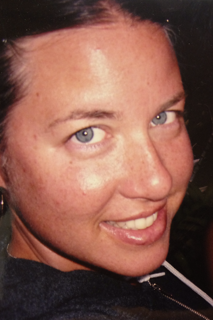Astrid Reichenbach, MA, CCLS, MFTI, is a certified Child Life Specialist working at California Pacific Medical Center in San Francisco. She provides support for children at the hospital, whether they are long-term patients, one-time visitors, or the relative of another patient. I spoke with Astrid about her work and the ways in which children understand and cope in these situations.
Liz: Can you tell us a bit about the work you do?
Astrid: My primary role is that I am a certified Child Life Specialist. Child Life Specialists provide psychosocial developmental support for kids and families when they’re in the hospital. Primarily, I work on inpatient units, where kids have to spend the night or spend extended periods of time here. Child Life Specialists in general can work all through the hospital: at emergency departments, at various subspecialty departments, at outpatient clinics. The role I have is to work with kids who are in the hospital for longer periods of time.
Liz: Who are the children that you work with?
Astrid: We see lots of kids, brand new babies all the way up to age 21. A lot of kids have childhood cancers, or diagnoses that they had as children. There’s a great diversity: besides being all ages, the kids come from all socioeconomic backgrounds, from different places, and have various degrees of severity as far as what’s going on with them. Some are here for something simple like getting their appendix taken out, or common colds or bacterial infections, while some of the kids have chronic conditions like cystic fibrosis or pulmonary issues like asthma. Of course, there are also children who have cancer and other hematological problems that could be life-threatening.
Liz: What is your goal in working with these children?
Astrid: By providing this support, we create a family-friendly, child-friendly environment, a place for them to express themselves. I like to tell them I’m a kid helper, like a teacher; I can be here to help you to understand why you’re here in the hospital and what’s going on with your body, and also help to make the experience the best it can be. I run the playroom and all kinds of activities. Sometimes I do medical play regarding the procedures or what’s happening with them. I work with siblings as well, to help them understand why their brother or sister is in the hospital. When it becomes an end-of-life issue, that’s when we start working with the family to help them be able to express what is happening with the children, to help them through their grief and loss, and ultimately perhaps to be involved in the last days. Sometimes, we work with siblings after the loss as well. We run an oncology camp for children and their siblings, so there are quite a few siblings—who can attend until they’re 18—who have lost a brother or sister. We get to know the families, sometimes over the course of many years.
A big role the Child Life program has is child advocacy. We work at the system level as well, helping to write policies, educating staff, working with interdisciplinary teams of doctors and nurses to implement policies and procedures that are family-centered. Originally, that’s how Child Life began: we needed to have a voice for children. This was in the days when parents weren’t allowed to be with the children, so there wasn’t someone there to speak on their behalf. It’s still a big part of what we do.
Liz: You mentioned that you help to guide activities and sometimes medical play with the children. Can you describe these activities, and how you engage the children in dealing with these serious topics?
Astrid: We have a teen room and a play room that’s open to them. There are always art activities happening, Legos and things left out, and lots of explorative and imaginative play. If they can’t come to play for whatever reason, we bring things for them do to their bedside. Basically, we want the children to continue on their developmental trajectory—a hospital stay shouldn’t hinder their development. Sometimes, we provide specific activities like medical play, where I might bring dolls or stuffed animals into a child’s room, with miniatures and toys that represent wheelchairs and beds, and we can set it all up to be like a hospital. We pretend to do medical procedures. Sometimes it’s very child-led and driven; other times there are specific things I need to express to the child, like showing them something that is going to happen to them, and I teach them through dolls or puppets. Children sometimes project emotions onto the doll, talk through the doll, and use it to express feelings, emotions, and questions about what’s going to happen. Some kids just want to play with medical supplies, like syringes without needles, Bandaids, or other things they see here. For these kids, especially oncology kids, they experience and see the same medical supplies a lot, so for them to be able to practice on their doll is very empowering. It allows mastery and control over what’s happening to their body. Doctors and nurses often find these kids are then more comfortable and not as anxious.
Liz: How do you talk to children about end-of-life?
Astrid: It depends on how old the child is. The older kids, we might hang out, play pool, and just talk. Often they open up and express what’s going on with them. It’s a therapeutic time together to help them process. One kid who stands out for me is a young man who had been dealing with having cancer for years, but really came out of his shell during the latter half of his life. Our relationship was strengthened by the fact that I didn’t push him. I was a steady constant and let him come to me on his own time. At the end we really developed a strong relationship. A lot of our big, and pretty intense, talks were had while playing pool together. I’m very fortunate in that a lot of what I do is I get to hang out with kids and share experiences with them.
Liz: Do you find that kids tend to have similar experiences in the hospital and at end-of-life, or is there a wide variation in how they cope?
Astrid: I just had this conversation the other day with my husband! I came home and said, the one thing I think I know now is that, regardless of their age, and regardless of what they say, when it comes down to the very end, everybody wants to be with the ones they love. Sometimes teenagers come up with a plan about where they want to die and how, but in the end, they do not want to be alone. That’s the one constant that has stood out for me: that most kids, and even adults, do not want to be alone, even if they say that earlier on. For children, they usually want to be with their parents; and some older people I’ve worked with even want to be with their moms and dads, long since passed.
I’ve also found that kids don’t want to be forgotten. In younger kids, there’s sometimes an idea that people will forget about them. We deal with it by helping to make memories with the children, reinforcing the idea that they leave behind something. Developmentally, being lost is a big deal for them. And when you’re a teenager, you’re coming up with your identity, and teens want their life to have meant something and to leave behind a legacy.
Liz: Finally, what advice can you leave our SevenPonds readers with, particularly those who may be looking for ways to communicate about end-of-life with children?
Astrid: I think it depends on the age of the child, but I have found that being open and honest with kids is best. For instance, when a parent is dealing with the fact that their child is going to die, a lot of their own sadness and grief gets projected onto their children. They don’t let the kids have their experiences, and process through, which takes time—so I would say for parents to be able to immediately get the help they need personally, so they can then help their children sooner rather than later. You want to give children ample to time to process their feelings and emotions. And even when adults don’t tell kids things or restrict information from them, kids still know what’s going on; it’s important not to hide things or lie to children. Certainly, there’s different ways in which you should talk to a 7-year-old versus a 17-year-old. If you have questions about that, look into it, research how to talk to children about death and dying at various ages so you can learn how to explain it in appropriate ways.
Also, as far as advanced notice: talk about your own spiritual beliefs and open that dialogue with your children right away. Start talking about existential things with your kids from the very beginning, like what life is about. It helps them with being able to talk about difficult things that happen—a pet dying, grandparents dying, the first ways children experience death. With kids, it so happens I’m very straightforward. I tell them, I’m dying too, I just don’t know when it will happen; you are dying, but doctors have a better idea about when that is going to be. Regardless, we are all in this life, long or short, trying to do the same thing… shouldn’t we be open and loving and compassionate, and talking about our issues with our loved ones, and accomplishing our goals every day and every moment? That’s how we see it here, and working with kids over the years that certainly gets reinforced.
Learn more about the Child Life Services program at the CPMC website.

 How to help Children deal with Grief? An Interview with Astrid Reichenbach
How to help Children deal with Grief? An Interview with Astrid Reichenbach




 Recovering Cremation Remains After the Los Angeles Fires
Recovering Cremation Remains After the Los Angeles Fires
 “As Tears Go By” by Marianne Faithfull
“As Tears Go By” by Marianne Faithfull
 “The Sea” by John Banville
“The Sea” by John Banville














